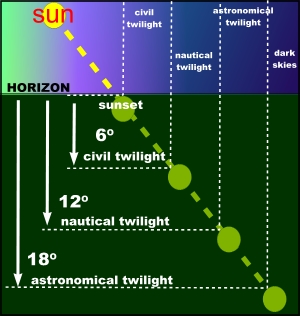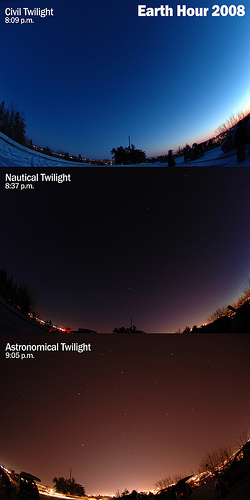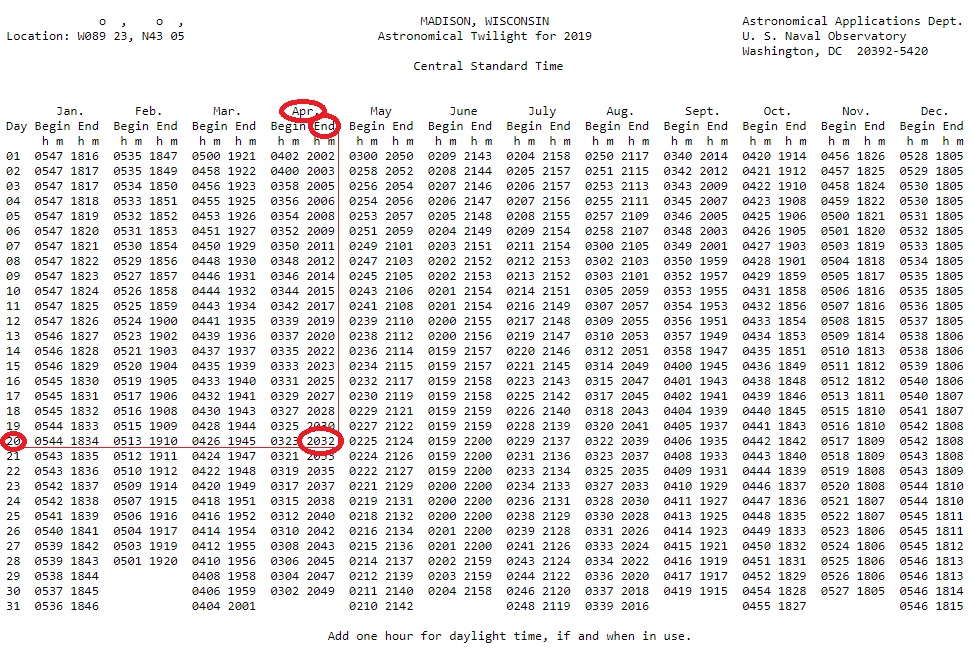As we are our observance of the Triduum at St. Mary’s in Pine Bluff in the Extraordinary Form, I also received a question about the time to begin the Easter Vigil.
The time for the Easter Vigil is explained in the Church’s law.
Here is an oldie but goodie. Updated for 2019.
From a reader:
QUAERITUR:
There is a parish in our diocese that is advertising (in the bulletin and even in the diocesan paper) a 4:00 p.m. Easter Vigil. Are there ANY circumstances which allow for such an exception to the rule that the Easter Vigil may not begin until after sundown?
I seem to remember a clarification from Rome which stipulated that beginning an Easter Vigil at the same time as anticipated Masses is “reprehensible.”
I cannot think of any exceptions.
Given the time of year and daylight savings time, 4:00 pm is simply too early. It is still too light out. I am leaving aside the dilemma of people in, say, northern Alaska, where length of day and night and day at different times of the year can be pretty dramatic.
But, ad rem…
Since this night is the most important of the year, you want to get it right. Right? That includes the right time when the rite is to begin. The symbolism of the light in darkness is important to the meaning of the rite. And the purpose of our liturgical rites is to have an encounter with mystery. The signs and symbols are important.
This Vigil (which is by definition a nighttime action) is not like the normal “vigil” celebrated in anticipation of a all other Sundays or Holy Day. It has a unique character in the whole liturgical year. St. Augustine called this “the mother of all Vigils” (s. 219).
The rubrics for this rite, as found in the 2002MR says this is “nox“, night.
3. Tota celebratio Vigliae paschalis peragi debet noctu, ita ut vel non incipiatur ante initium noctis, vel finiatur ante diluculum diei dominicae.
The whole celebration of the Paschal Vigil ought to be completed at night, both so that it does not begin before the beginning of night, and that it finishes before dawn of Sunday.

As your Lewis & Short Dictionary will indicate perago is “to complete”, in other words, “to get through it”. Vel…vel… is the equivalent of et… et.
To repeat: the Vigil is to
a) be gotten through entirely during nighttime
b) begin after nightfall
c) be completed before dawn
Also,
4. Missa Vigiliae, etsi ante mediam noctem celebratur, est Missa pachalis dominicae Resurrectionis.
The Mass of the Vigil, even celebrated before midnight, is the Easter Mass of the Lord’s Resurrection.
In most cases you don’t have to say that a vigil Mass is for the following Sunday. But the unique character of the Rite, different from the Sunday morning Mass, needs to be clarified. Also, the time midnight is explicitly mentioned.
Midnight is the traditional time to begin the Vigil Mass rites!
Also, the 1988 Circular of the CDW, called Paschale solemnitatis (Notitiae 24 [1988] pp. 81-107) dealt with the time of the beginning of the Vigil,
78. This rule is to be taken according to its strictest sense. Reprehensible [!] are those abuses and practices which have crept in many places in violation of this ruling, whereby the Easter Vigil is celebrated at the time of day that it is customary to celebrate anticipated Masses.
“Reprehensible”… get that? And that from a year long before this Pope.
The Jews made all sorts of distinctions about sundown and twilight and night. So do we when considering liturgical times.
We must drill into initium noctis… the beginning of night.
Night is the time when light from your planet’s yellow star is no longer visible. Night is when twilight ends. It is after nightfall. This is the earliest time we can start the Vigil: initium noctis... the beginning of night, nightfall.
is the time when light from your planet’s yellow star is no longer visible. Night is when twilight ends. It is after nightfall. This is the earliest time we can start the Vigil: initium noctis... the beginning of night, nightfall.
What does this mean? We need some definitions.
Sunset is when the upper edge of the sun finally sinks the horizon. This is what the Jews called sunset. For Jews the evening twilight lasted until a few stars appeared. Then it was night. They had to figure these things out so that they knew, for example, how far they could walk to get to places, etc., before the sabbath fell.
There are also levels of twilight. There is Civil Twilight, that is, when the sun’s center is 6 degrees below the horizon. Of course there is still a lot of light from the sun in the sky at that time.
More helpful in this day of astronomical precision and electric lights is to go by Astronomical Twilight: when sunlight no longer illuminates the sky.
That’s the time we are looking for: the end of Astronomical Twilight.
The end of Astronomical Twilight is a fancy way of saying, “it’s night”.
Astronomical Twilight is helpful because we can use the calculations of the Naval Observatory to figure out when Astronomical Twilight takes place.
HOW?
Exempli gratia let’s say you are in the Diocesis Extraordinarii Ordinarii Madisonensis, where I am now.
Summon a chart for Astronomical Twilight from the Naval Observatory for your place and find the end of Astronomical Twilight for 20 April 2019 (yes 20, Saturday, because in 2019 Easter Sunday is 21 April). NB: There is a drop down menu for the type of table! Choose Astronomical Twilight… its default is sunrise/sunset.
My results were 2032 + 0100 hour for daylight savings (in force where I write), which means that the starting time can be 2132. Let’s call it 9:30 pm, to start the procession to go to the place for the flinty sparking of the fire.
CLICK FOR LARGER
Your nightfall (your exact Astronomical Twilight) will be a little different depending on your location (latitude and longitude, elevation, etc).
Clearly it is the Church’s intention that the rites begin when it is dark. There can be a little flexibility. There might still be traces of twilight but it would be black in church with the lights out, outside trees, mountains, and buildings might be in the way, etc.
The point is: let there be darkness!
So… if by 4:00 pm where you are night has fallen, fine! Start the Vigil Mass. If not, and I will bet it hasn’t in most places people inhabit, then 4:00 pm is too early.
Given how important the Vigil is, it is a grave liturgical abuse to begin Mass at 4:00 pm.
Didn’t that document say “reprehensible”?



































The United States Conference of Catholic Bishops publishes a guideline every year concerning how early the Easter Vigil may begin. Other conferences of bishops in the world probably do the same. The primary consideration is that it begins and ends at night.
http://www.usccb.org/prayer-and-worship/liturgical-year/triduum/roman-missal-and-the-easter-vigil.cfm
“When Holy Saturday occurs during Daylight Saving Time, pastoral planners should contact local weather stations for the time sunset will occur. Another 45 minutes or one hour should be added to that time in order to determine the approximate time of nightfall.”
If your parish staff can tell time, they can tell when they can begin.
According to Gregory DiPippo (here):
“Prior to the Holy Week reform of 1955, the services of the Triduum were all anticipated, so that the Tenebrae services, Matins and Lauds of the three days, all took place on the preceding evening, and the three Masses (including the Easter vigil) took place in the morning. I have a Holy Week book formerly owned by a canon of St. Peter’s; when I bought it, it contained a clipping from a newspaper of the year 1930, listing the Holy Week services in several Roman churches. At St. Peter’s Basilica, the Tenebrae services began at 4:45 p.m. each day, and the three Masses at 9:15 a.m. A similar schedule was observed by various Byzantine Rite churches in the city, such as the Pontifical Russian College; this schedule remains the norm in Byzantine churches to this day.” (bf emphasis added)
The three 9:15 am Masses were the Mass of the Lord’s Supper on Holy Thursday morning, the Mass of the Presanctified on Good Friday morning, and the Easter Vigil Mass on Holy Saturday morning. In the case of these Masses, the “anticipation” was anticipation to the morning (rather the more familiar anticipation of a morning Mass to the previous evening).
Yes, I agree entirely. But I had already left school before the 1955 reform of Holy Week. And for many hundreds of years the Church had been starting the Easter light and celebrating this Mass on the Saturday morning, and likewise celebrating Tenebrae at an entirely unsuitable hour. I remember the satisfaction with which we received these first liturgical reforms. Among other things we recalled the story of St Patrick defiance in lighting the Easter fire of Christ on one hill before the High King had lit his official pagan fire on the Hill of Tara.
Thanks for such an in depth answer Father! Although I’m not the one who sent this question in, I recently wondered the same thing.
I’m a bit concerned about my parish having the Vigil Mass scheduled to begin about five minutes before the technical end of Astronomical Twilight. With the procession, the lighting, and such, I hope this falls into the “wiggle room.”
Wow, Father, thank you for this article! That is honestly so cool!
Just one question: You said that the “traditional” point of time for the beginng of the Vigil rites would be midnight. Would this mean 2400 of Saturday?
And in the Middle Ages, the usus began to celebrate the Vigil Mass in the morning (just as it is done with any other Vigil Mass, as far as I know). The people couldn’t attend. It is often said that it was an achievement of the liturgical Revolution that the Vigil got its original place back at nightfall, but that is of course a fable – it was always supposed to begin in the evening, not in the morning. That is why at some cathedrals, None was said in the morning, so that the Vigil Mass could be said immediately after – according to the law that it is to be celebrated after None.
This document :- http://www.diocesidiroma.it/archivio/2019/cardinale/19.03.01.Lettera%20ai%20Sacerdoti%20sul%20Triduo%20Pasquale.pdf?fbclid=IwAR3TXnnEohKQexCxp9ucdxUKafFV8xIx50zrJuZkkLEwkOO7rDCPpuVScLw%EF%BB%BF seems to be about to cause vapourings on Pray Tell. Does it, as implied, forbid Roman convents from celebrating the Easter Vigil?
I’m a big fan of a morning Easter Vigil when we fully restore the pre-1955 rites for two reasons:
A) preservation of the fast that begins with Good Friday; and
B) let the actual celebration of Easter commence with the city-wide bells that rang the day B16 was baptized… in most countries today, Easter Monday is not a public holiday, so let the familial and secular celebrations extend for a full day and a half.
Hello WmHesch,
Beginning last year, certain FSSP parishes received permission to use the 1955 rites, one of which was Sacred Heart in the Fort Wayne, IN area. A friend of mine was able to participate in these, and my assumption is that the 1955 elements would include a morning celebration, but apparently that is wrong. According to the pastor, the start times are set by liturgical law and so the 1955 rites, if implemented again, would stay in the evening, afternoon, and night. I have mixed feelings about that, morning Masses in Holy Week are certainly better for families, but with an open heart I try to remember that having them at the later times is in our best devotional interest. I’m curious what Fr. Z’s take is on the start times if liturgical law weren’t what it is.
While I totally like the idea of an Easter Vigil that starts after sundown, I can’t really understand how a practice that is a living memory for many people (albeit not me) and that was done for so many centuries could be reprehensible.
Tenebrae in the evening I really like. I’ve only experienced it with the Anglicans. Since no one would show up at 4 am except resident monks, an evening service would make sense.
I know of several EF Vigils celebrated at similar times. The reason being that they are celebrated in Church’s where there is already an OF Vigil being celebrated. They work with the only times available to them and are normally under strict instructions to be out by a certain time. The LMS Vigil in London is one example of this.
It is also worth pointing out that the move of the Mass to the evening was only introduced in 1951
I think one of the things we ought to note is this:
What is „reprehensible“, rather than just incorrect, a matter of „mere disobedience“ and perhaps eben epiky (like the “early morning“ vigils that, as they usually do, happen to miss the Mark and, while they do begin in utter civil darkness, happen to miss the mark and end after sunrise), is, explicitly and specifically, to celebrate the Easter Vigil at the usual time of the anticipated Sunday Mass.
It is something special.
Hence, the EF-before-1951 was a different story. There were no anticipated Sunday Masses then. Plus, it was considered more of a vigil then. (The Midnight Mass on Christmas is not a vigil.)